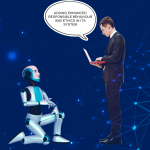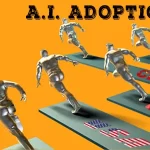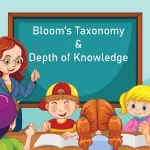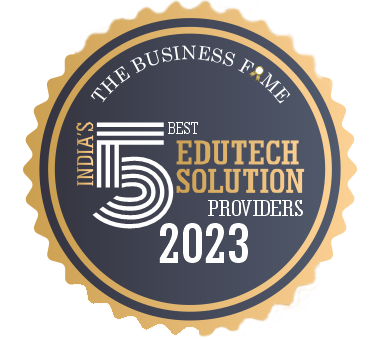When one hears the word “education,” what comes to mind? Children in a classroom, high schoolers passing by their lockers, or a teacher reading books to little children are all likely possibilities. Whenever one thinks about schools and learning, it is easy to neglect adult education. Adult education, on the other hand, occurs on a daily basis. There are numerous compelling reasons for adults to pursue education. The Adult Learning Theory comes into play in this situation.
Adult learners are students who are over the age of 18 and do not begin postsecondary education the same year they graduate from high school. One may adapt business training programs to take advantage of attributes adult learners possess. This could include their eagerness to learn relevant material, their desire to connect with experience, and their urge to develop themselves, all by understanding how adults learn.
Adult education is very popular in the United States. Various colleges and institutions frequently refer to these students as “non-traditional students”. Most adults pursue education for a variety of reasons, including self-improvement, the necessity to learn specific skills, and the desire to better career prospects.
If an adult is ready to continue their education, they must first comprehend how they learn differently. Adult Education Theories and practices assist millions of adult students in achieving success as they continue their growth and education. In this article, readers will learn about the ideas underpinning Adult Learning Theory and how it can help one achieve their higher education goals.
What is Adult Learning Theory?
Corporate training circles frequently use the term “Adult Learning Theory”.
First, let us debunk a myth: There is no SINGLE Adult Learning Theory. There are several popular hypotheses that describe how adults learn from various perspectives. It is a concept or study of how adults learn and how it differs from how children learn. Additionally, its main goal is to discover the learning styles that are most appropriate for adults.
Andragogy, action learning, experiential learning, self-directed learning, and transformational learning are only a few examples of adult learning theories. All of these theories aim at assisting one in creating effective learning experiences for adult learners.
Components of Adult Learning Theories
Adult Learning Theory is a branch of study that focuses on figuring out how to make ‘training’ something adults desire to undertake and how to make it effective. To put it simply, if you want the finest outcomes, you must integrate four vital components in your training and development for adults.
Motivation
When creating training content, the first constituent educators must know about is motivation. Adult learners will not learn if they do not have a strong desire to do so. That’s all there is to it. There are a variety of approaches that can be used to elicit a sense of motivation. Here are a few examples:
- Firstly, educators must clearly define how the learning curriculum will have a concrete and immediate impact on the learner’s job. When creating learning content, one should not leave it up to the student to figure out why the information is being offered; instead, one must explain to them why they are supposed to study the material up front.
- It is necessary to establish learning chances that will allow the learner to improve personally. In a corporate setting, for instance, learners are more interested in the process if they believe it will help them get a promotion or progress their career in some way.
- Extrinsic competitiveness can encourage learners. This is why learning that incorporates gamification and social aspects is becoming increasingly popular right now.
Essentially, it boils down to a simple principle: Adults will desire to learn when they believe it would benefit or add value to their life. That is what motivates people.
Reinforcement
Reinforcement can either be positive or negative. Positive reinforcement in Adult Learning Theory refers to providing something that fosters excellent conduct. For instance, one can predicate development-based learning on the premise that learning a new skill could lead to a pay raise.
Negative reinforcement, on the other hand, entails taking actions to correct negative behavior, such as safety training to reduce workplace errors.
Retention
When creating corporate learning material, one must consider not just if the learner will absorb the material at first, but also if he or she will retain it. One should create courses that are tailored to the target audience’s needs. Educators can deploy these courses utilizing the most effective approaches that encourage participation.
Interactivity, quizzes throughout the learning modules, and the opportunity to instantly put what has been learned into practice are all fantastic strategies to enhance the retention of material.
For instance, after each piece of information is provided, educators can invite participants to take a quick quiz to see how much they have retained. In many cases, simply informing learners that the instructor will be assessing them on the content is a good retention tool in and of itself. Case studies and scenarios are also quite helpful. These are all simple things to incorporate into learning, thanks to the tools available with a learning management system.
Transference
This stage of Adult Learning Theory is when the learners can put what they have learned into practice in a real-world setting.
When the learners reach this stage, the educator will know if the information was effective and how well they can interpret and apply it. Moreover, transference is frequently monitored in a corporate environment against a set of preset standards in order to coincide with overall performance and organizational objectives.
Educators can consider incorporating social elements into the process to increase transference inside the corporate learning environment.
Different Types of Learning Theories
When it comes to adult learners, there are numerous learning theories, each with its own set of applications and methodologies. Depending on their primary learning style, different ideas and practices will resonate better with adult learners. The following are some of the most popular Adult Learning Theories:
Andragogy
Andragogy, coined by Malcolm Knowles in 1968, is defined as “the art and science of assisting adults in learning”. It is opposed to pedagogy, which is defined as the “art and science of assisting children in learning”. Adult learners vary from children in numerous respects, according to Knowles and the andragogy theory.
The andragogical approach is based on four principles:
- Adults learn more effectively through experience (even if they make mistakes).
- They prefer a practical approach to learning and must be able to apply what they have learned to address a specific problem.
- Adults are most interested in learning things that are immediately applicable to their lives.
- They must participate in the design and evaluation of their own education.
Case Study: Farm Bureau, a rural service organization, employs an andragogic strategy to train volunteer leaders and Board of Director candidates. Through mutual agreement with each student, the training programme diagnoses learning needs and establishes goals. Participants must actively participate in activities, debate the practical worth of their learning. Moreover, they must apply what they have learned to their leadership roles.
Transformational Learning
Transformative learning theory, developed by Jack Mezirow in 1978, asserts that all learners make meaning of the world around them by employing a variety of assumptions, predictions, and perceptions.
- Through a process of problem-solving, procedural tasks, and self-reflection, transformational learning seeks to help learners modify — or transform — their existing frames of reference.
- Secondly, individuals experience learning transformations when educators confront them with a “disorienting predicament”. This causes them to question their previous beliefs and critically reflect on what has happened.
- It can change an individual’s viewpoint on how to behave, interact, or solve problems. Hence, educators often regard it as one of the “stickiest” types of learning.
Case Study: Workforce Council financed a group of 12 worker-learners to attend an Australian university’s Graduate Certificate in Executive Leadership program. Three teams were formed from the group. To impact improvements in their organizational processes and systems, each team engaged in transformational learning.
Learning materials were available on the university’s website. Face-to-face consultations on the job site and regular emails were also part of the training program. All the learning lessons were designed to foster a critical and reflective thinking culture. This would help shift existing viewpoints and habits. Additionally, it allowed the students to break free from their “habits of thinking.”
Action Learning
Action learning, coined by Reg Revans in 1982, is a problem-solving strategy. It entails taking action and then reflecting on the outcomes.
- It aims to improve problem-solving processes while also simplifying the solutions that follow.
- This method approaches challenges by first asking questions to define the issue. Following this, they reflect and identify potential solutions, and finally take action.
- Questions boost learning outcomes by fostering group dialogue and cohesion, as well as developing inventive and systematic thinking.
- The ability to take action on the problem the group is working on is a necessity for action learning. The group loses its vitality, inventiveness, and passion if learners merely give recommendations.
- Lastly, a coach should be there to assist the group in learning and working more efficiently.

Case Study: In 1990, Florida Power and Light (FPL), a power utility company, was the first company in the United States to receive the Deming Prize for Quality. But before that, it had faced problems with its power producing systems and could not effectively convert energy to electricity. This issue had been present for quite some time.
Eventually, they gathered a team of people from various FPL departments to rectify the problem. The team members improved their problem-solving and teamwork skills by working together. As a result, they were able to identify and resolve the cause of the problem.
Experiential Learning
Experiential learning was developed in the 1970s by David Kolb. It is based on the work of John Dewey, Kurt Lewin, and Jean Piaget. This Adult Learning Theory involves a hands-on approach that places the learner at the center of the learning process.
- Active involvement is very important. However, learning occurs only when the individual reflects on what they are doing, according to the theory.
- Secondly, continued participation, reflection on practice, interpretation of the experience, and application of knowledge obtained from experience are the four pillars of experiential learning.
Case Study: Capital One teamed up with the College of St. Bernard/St. John’s University to mentor students enrolled in an advanced global strategy course. Students faced real-world business difficulties and worked to address them by actively participating in the research and hands-on work processes. Mentors solely offered expert assistance and counsel.
Self-Directed Learning (SDL)
Self-Directed Learning is based on Malcolm Knowles’ Adult Learning Theory, with self-management elements added by D.R. Garrison in 1997.
- Individuals evaluate learning requirements, develop learning goals, find resources, implement a learning plan, and analyze their own results using Self-Directed Learning.
- Professors, mentors, resources, and peers frequently aid SDL.
- It is necessary for the learner to have access to and pick relevant learning.
- All learning decisions are under the control of the learner.
Case Study: Tahiya Alam, a University of Manchester Junior e-learning Support Specialist, needed to publish the findings of a scientific research study online. Ms. Alam met with e-learning colleagues and investigated her choices once she discovered her learning requirements. She upskilled herself using Self-Directed Learning principles and was able to create interesting and robust e-learning modules.
For a more effective training program, combine Science with Adult Learning Theory
When knowledge is relevant and beneficial to adults, they remember it better. As a result, it is critical to understand why one is studying about a particular theme. Adults are frequently better at generating answers to real-life problems than they are at memorizing knowledge because they have a mature attitude. Adult learning is built on the foundations of problem-solving, rapid application, and performance-based activities.
Understanding diverse adult learning theories and practices might help an adult learner be even more successful as he or she prepares to seek higher education. Recognizing one’s learning style, knowing adult learners’ strengths and limitations, and preparing for their specific strengths can all assist an adult learner succeed.
Image Sources: Shutterstock and Unsplash
For more information on Adult Learning Theory, visit our blog.
Create. Engage. Inspire.

















